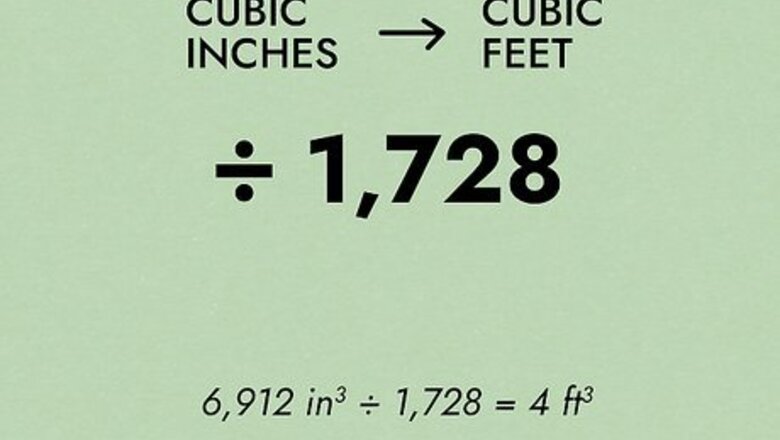
views
Converting to Cubic Feet

Divide by 1,728 to convert cubic inches to cubic feet. If you measured your shape or space in inches or were provided with units in inches, it's easy to convert them to feet. Keep in mind that inches are smaller units, so there will be fewer cubic feet than cubic inches. Simply take the volume in cubic inches and divide it by 1,728. For instance, if the volume is 6,912 cubic inches, divide 6,912 by 1,728, which is 4. So the volume is 4 cubic feet.
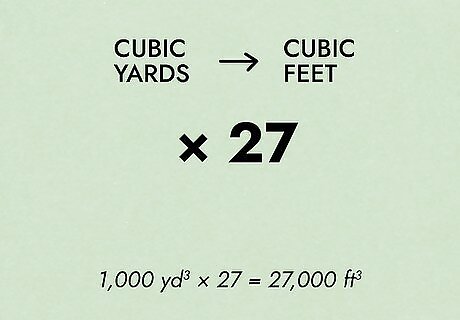
Multiply by 27 to convert cubic yards to cubic feet. If you took your measurements in yards instead of feet, all you need to do is multiply the volume by 27. Remember that yards are larger units than feet, so you'll have more cubic feet than cubic yards. For instance, if the volume of your shape or space is 1,000 cubic yards, multiply 1,000 by 27, which equals 27,000 cubic feet.
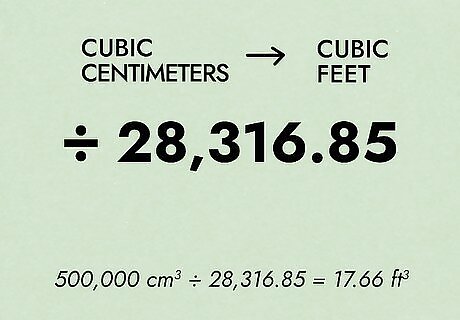
Divide by 28,316.85 to convert cubic centimeters to cubic feet. Even though centimeters are metric units and feet are imperial units, you can still convert between the two. Centimeters are smaller units than feet, so you'll have more cubic centimeters than cubic feet. Start with the volume in cubic centimeters and divide it by 28,316.85. For example, if the volume of your shape or space is 500,000 cubic inches, divide 500,000 by 28,316.85. This is equal to 17.6573312356, which can be rounded to 17.66 cubic feet.
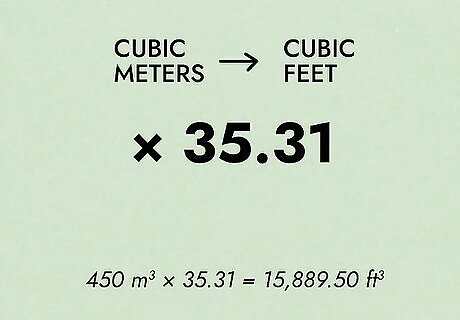
Multiply by 35.31 to convert cubic meters to cubic feet. Converting between metric units and imperial units isn't as hard as you might think. To change your measurement from the larger cubic meters to the smaller units of cubic feet, multiply by 35.31. For example, if your space or shape has a volume measurement of 450 cubic meters, multiply 450 by 35.31 for a result of 15,889.50 cubic feet.
Finding the Volume of a Rectangular Prism
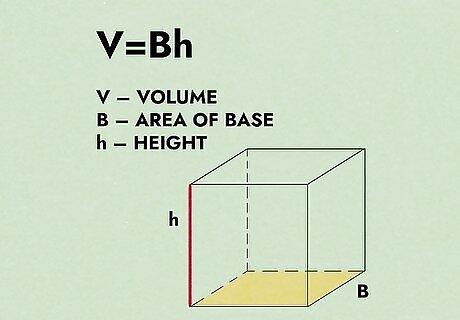
Note that the formula for the volume of a rectangular prism is V=Bh. Both square shapes (cubes) and rectangular shapes are considered rectangular prisms. In this formula, V is the volume, B is the area of the base, and h is the height. Simply multiply the area of the base times the height to find the volume. Use the same units for each side of the prism. Ideally, measure in feet so the result is in cubic feet. Otherwise, you can convert the units once you find the volume.

Find the area of the base by multiplying the length by the width. To find the area of a rectangle, you need to know the length (L) and the width (W). Measure each side or refer to the diagram if the numbers are provided for you. To find the area of the base of a rectangular prism, multiply the length by the width. For example, say the length of a room you're measuring is 10 feet and the width is 5 feet. Multiply 10 feet by 5 feet, which is 50 feet. The feet are squared because you are multiplying not just the numbers but the units as well.

Multiply the area of the base by the height to find the volume. Now that you know the area of the base, measure the height or refer to the diagram if you have one. Multiply the area of the base by the height to finish the formula. For example, if the height of the room is 15 feet, multiply 15 by 50 feet (the area of the base of the room from the previous step). The total volume of the room is 750 feet.
Calculating the Volume of a Cylinder

Use the formula V=Bh to find the volume of a cylinder. In this formula, V stands for volume, B stands for the area of the base, and h stands for the height. All you need to do is multiply the area of the base by the height to find the volume of the cylinder. Measure the space or shape in feet or convert all of the units to feet before beginning so your answer is in cubic feet. Otherwise, convert the units to cubic feet when you know the volume.
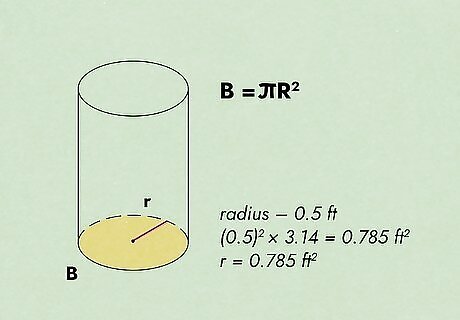
Find the area of the base using the formula πr. Refer to the diagram to find the provided number for the radius (r), or measure it if you're working with a three-dimensional shape or space. Since the base is a circle, find the area by squaring the radius and multiplying it by π, which is equal to 3.14. For instance, if you're digging a hole for a post and the radius of the post is 0.5 feet, multiply 0.5 by 0.5 to get 0.25 feet. Then, multiply 0.25 feet by 3.14, which is equal to 0.785 feet. Remember that the units for the radius are squared because you're multiplying them together the same way you multiply the numbers together. If you know the diameter of the circle instead of the radius, simply divide the diameter by 2 to get the radius. So, the radius of a circle with a diameter of 12 would be 6.
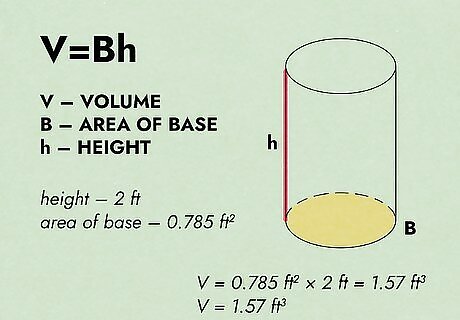
Multiply the area of the base by the height to find the volume. Measure the height of the cylinder or refer to the diagram if the numbers are provided for you. Then, just multiply the height by the area of the base. For instance, take the area from the last step, which is 0.785 feet. If you need the hole for the post to be 2 feet deep, the height would be 2, so multiply 2 by 0.785 feet to get 1.57 feet which is the volume of the post hole.












Comments
0 comment